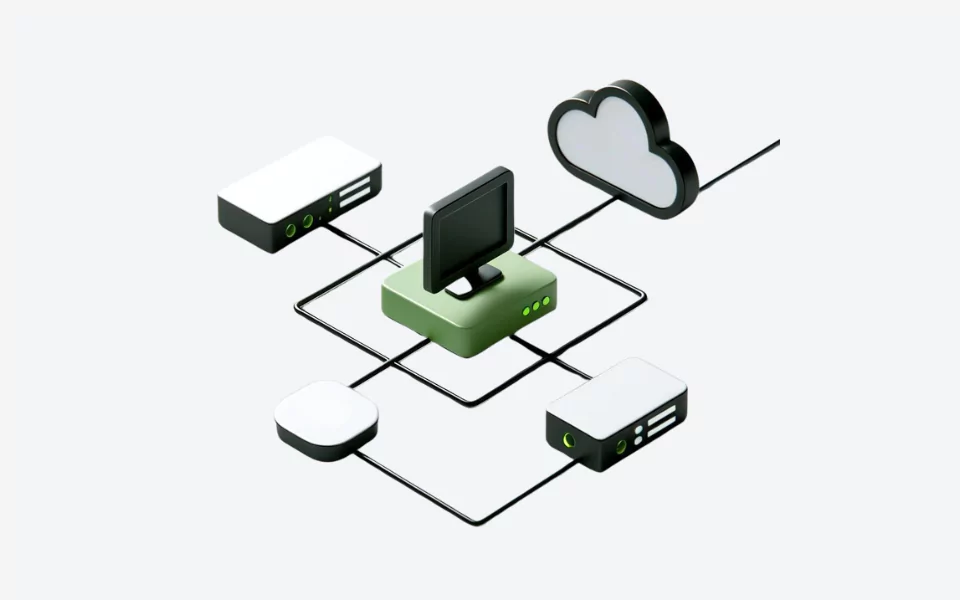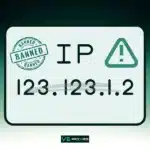Understanding the concept of proxy hostnames isn’t just a technical detail; it’s essential for getting the most out of your proxy service. With this knowledge, you can effectively use proxies to bypass website restrictions, protect your online privacy, gather data strategically, and more.
As a provider of proxy services, we believe it’s crucial that our customers and readers have a strong grasp of the key concepts behind our technology. A proxy hostname is one of those fundamental pieces, and this guide aims to give you a complete understanding of its role and how to use it.
Table of Contents
TL, DR
- A proxy hostname identifies and points to a specific proxy server, enabling users to rotate through different proxy IP addresses without manual configuration. This facilitates activities like web scraping and bypassing website restrictions, enhancing privacy and data gathering efforts.
- Proxy hostnames can encode information about the proxy’s geolocation, type, and data center, simplifying the process of switching between proxies and systematically preventing blocks, thereby abstracting away the complexities of managing underlying proxy IP addresses.
- The format “hostname:port” used by most proxy providers combines the proxy server’s identification with the specific network port for routing traffic, crucial for accessing various proxy services (HTTP, HTTPS, SOCKS) and ensuring proper connectivity.
- Reverse proxy hostnames, configured in server blocks of reverse proxy servers like Nginx, Apache, or Traefik, facilitate controlled access to backend application servers, offering benefits such as centralized SSL/TLS termination, virtual hosting, and improved domain management.
- Common issues with proxy hostnames, such as connection errors or security warnings, often stem from incorrect setup, server downtime, or network restrictions, requiring checks on service status, proxy configuration, and potential interference from other network-related software or restrictions.
What Is A Proxy Hostname?
A proxy hostname refers to the hostname or domain name that identifies and points to the specific proxy server being used.
When using proxies for web scraping, bot operations, residential proxying, etc., proxy providers will typically give you a pool of proxy hostnames to rotate through. These could look like:
- example-proxy-1.providerdomain.com
- example-proxy-2.providerdomain.com
- us-proxy-192.168.0.1.providerdomain.com
- fr-proxy-45.67.89.012.providerdomain.com
Each of those hostnames maps to a different proxy IP address. Your bot/scraping software configures the proxy hostname to route its traffic through that specific proxy server.

The Proxy Hostnames Serve Two Main Purposes:
- They allow you to easily reference and switch between different proxy IP addresses without having to manually configure IPs.
- Many proxy hostnames also encode information about the proxy’s geolocation, data center, type (residential, data center, mobile, etc.) through subdomain naming conventions.
A Proxy Hostname Example
So when your code specifies proxy hostname “us-proxy-192.168.0.1.providerdomain.com”, it routes traffic through a US residential proxy at that IP. Changing the hostname changes which proxy server is used.
Using proxy hostnames instead of IPs makes it easier to rotate proxies systematically for preventing blocks. The hostnames abstract away the underlying proxy IP addresses.
Imagine a proxy server as a translator. The proxy hostname is like the translator’s business card. By giving someone the business card (using the proxy hostname), you connect with the translator (the proxy server) to facilitate communication (transmitting your internet requests) in another language (appearing from a different location).
Anatomy Of A Proxy List
Most proxy providers give you lists of proxies in a hostname:port format, for example:
- us-res-proxy12.example.com:8000
- nl-dc-proxy37.example.com:3128
- sg-res-proxy99.example.com:80
In this list:
- us-res-proxy12.example.com is the hostname of a U.S. residential proxy.
- 8000 is the port number to access that proxy.
- nl-dc-proxy37.example.com is a data center proxy in the Netherlands.
- 3128 is the port for that Dutch proxy.
- And so on.

The Relationship Between Proxy Hostnames And Port Lists
When working with proxy servers, as in contexts like Facebook scraping, buying from Ticketmaster, YouTube sub bots, or sneaker proxies, you typically deal with lists of proxy hostnames and ports together. There is an inherent relationship between these two elements.
A proxy hostname identifies the proxy server itself, while the port number specifies the network port on that proxy server which the traffic should be routed through.
This hostname:port format allows your scraping software, browser, or other client to easily configure the proxy settings by specifying both the proxy hostname to route through, and the port that proxy is listening on.
Why Is The Port Number Important?
The port number is crucial because proxy servers often run multiple proxy services on different ports for different purposes (HTTP, HTTPS, SOCKS4, SOCKS5 etc). Using the wrong port can cause connectivity issues.
When rotating proxies, you cycle through the entire hostname:port combinations from your proxy list. Efficient proxy management depends on keeping track of both the hostname and port together for each proxy instance.
What Is A Reverse Proxy Hostname?
A reverse proxy acts as a go-between that controls how outside clients access and interact with the organization’s backend application servers.
In the context of reverse proxy servers, a reverse proxy hostname refers to the domain name or subdomain that the reverse proxy is configured to receive incoming traffic for.
When you set up a reverse proxy like Nginx, Apache or Traefik, you define one or more server blocks. Each server block has a server_name directive which specifies the hostnames that the reverse proxy should listen for and handle requests.
Example
For example, if you have a server block with: server_name www.example.com;
Then the reverse proxy hostname is www.example.com. Any incoming web requests to www.example.com will be handled by that server block on the reverse proxy.
Reverse proxies commonly use wildcard hostnames as well to capture requests for an entire domain: server_name *.mydomain.com;
Here, the reverse proxy is configured to receive traffic for any subdomain under mydomain.com (app1.mydomain.com, app2.mydomain.com etc.)
Using reverse proxy hostnames provides benefits like:
- Name-based virtual hosting to run multiple apps on one server.
- Decoupling external hostnames from internal server names.
- Centralized SSL/TLS termination at the proxy level.
- Single point to update domain resolution.
- Access control based on hostnames.
FAQs: Troubleshooting Common Proxy Hostname Issues
Even with the best understanding of proxy hostnames, sometimes things might not work as smoothly as intended. This section addresses some of the most common issues you might encounter with proxy hostnames and provides solutions to help you get everything working correctly.
How To Find The Proxy Hostname For A Wifi Network?
To get the proxy hostname for a WiFi network, you typically need to check the network/proxy settings of the device or operating system you are using while connected to that WiFi network.
Here are some common ways to find the proxy hostname for WiFi:
Windows:
- Open the Settings app
- Go to Network & Internet > Proxy
- The proxy hostname and port should be listed under “Manual proxy setup”
macOS:
- Open System Preferences
- Go to Network
- Select the WiFi connection and click Advanced
- Go to the Proxies tab to see if a proxy hostname is configured
Linux (network manager):
- Open the network manager
- Edit the WiFi connection
- Go to IPv4 Settings
- Any proxy hostname should be listed under “Method”
Android:
- Open the Settings app
- Go to Network & internet > Advanced > Private DNS
- If configured, the proxy hostname will show as the “Private DNS provider hostname”
iOS:
- Open the Settings app
- Go to Wi-Fi
- Tap the info icon next to the WiFi network
- Any configured proxy hostname will show under “HTTP Proxy”
If you cannot find the proxy hostname through the device settings, you may need to contact the WiFi network administrator to inquire about any proxy configuration details for that particular WiFi network.
Error: “Unable To Connect To The Proxy Server.” What Should I Do?
- Double-Check: The most common culprit is a simple typo. Ensure that the proxy hostname and port number you entered in your settings match exactly what your proxy service provider gave you.
- Service Status: Visit your proxy service’s website or social media accounts to see if any maintenance or outages are reported.
- Try a Different Proxy: If your service offers multiple proxy servers, try a different hostname. This can help isolate if the issue is with a specific server.
The Website Says “The Connection Was Refused.” What Could Be Wrong?
- Downtime: The proxy server itself might be offline. Check with your proxy provider for any service interruptions.
- Authentication Required: Some proxies require a username and password. Make sure you’ve entered these credentials correctly if your proxy provider has supplied them.
- Server Overload: If your provider offers shared proxies, the server you’re using might be temporarily unable to handle more requests. Switch to a different hostname from your provider’s list.
Error: “Your Connection Is Not Secure.” Why Is This Happening?
HTTPS Incompatibility: The proxy you chose might not be configured to handle secure connections (HTTPS). Consult your proxy provider’s documentation on HTTPS proxy setup, if they support it. Some proxies may intentionally not support HTTPS to prioritize speed.
My Proxy Hostname Seems To Be Correct, But It’s Still Not Working. Help!
- Third-Party Interference: Temporarily disable any firewalls, antivirus software, or other network-related programs that might be blocking the proxy connection.
- Router/Network Restrictions: If you’re on a managed network (work, school), there might be network-level restrictions preventing certain types of proxy traffic.
- Customer Support: If all else fails, don’t hesitate to contact your proxy provider’s customer support. They’ll have the most in-depth knowledge of their system and can help diagnose the problem.
How do I set up DNS records for a reverse proxy with multiple subdomains?
To correctly route traffic through a reverse proxy with multiple subdomains, you need to set up appropriate DNS records.
For a subdomain like host1.domain.com, you should create an A record pointing directly to the IP address of host1, rather than relying solely on a wildcard record that would route everything to the proxy. The wildcard record (*.domain.com) should only handle subdomains that don’t have a specific A or CNAME record.
Related articles:
Best Roblox Unblocked Sites & Proxies in 2024 (Free Options)
- Tags:
- Proxy Tips and Tricks




